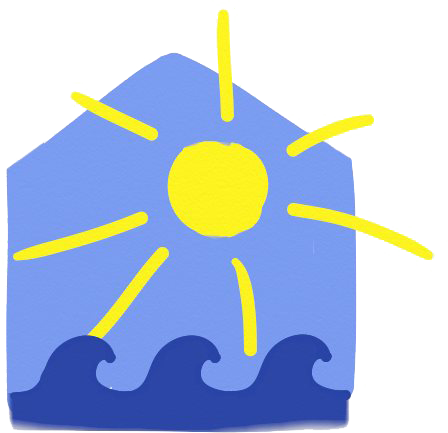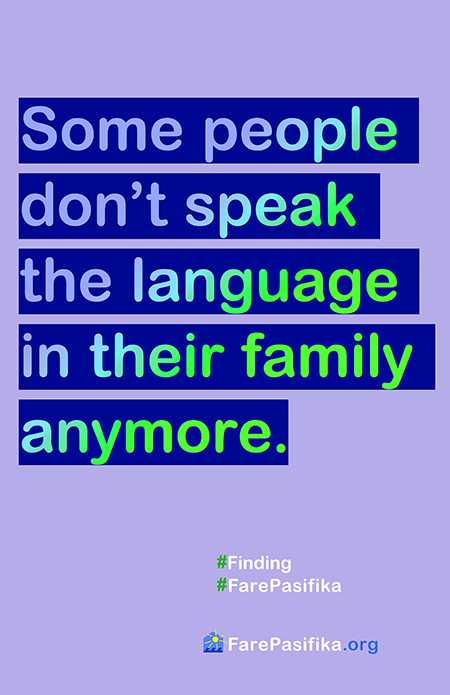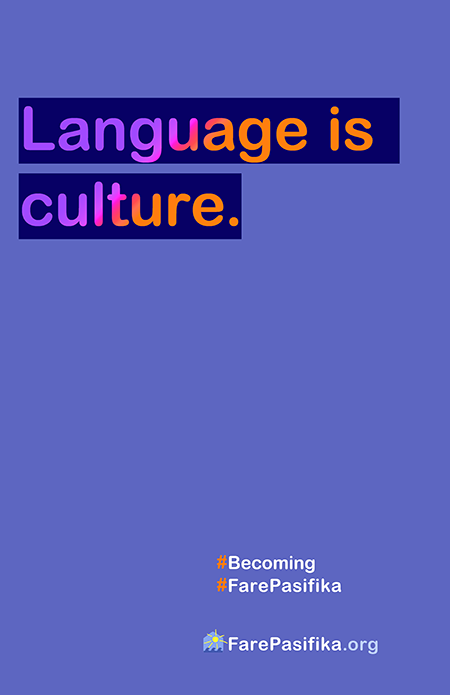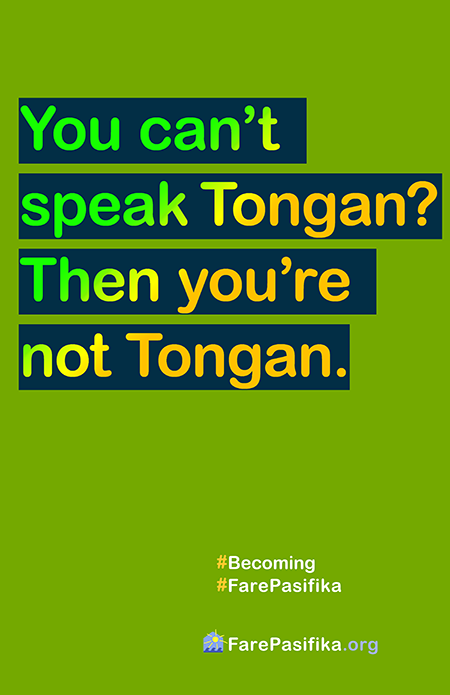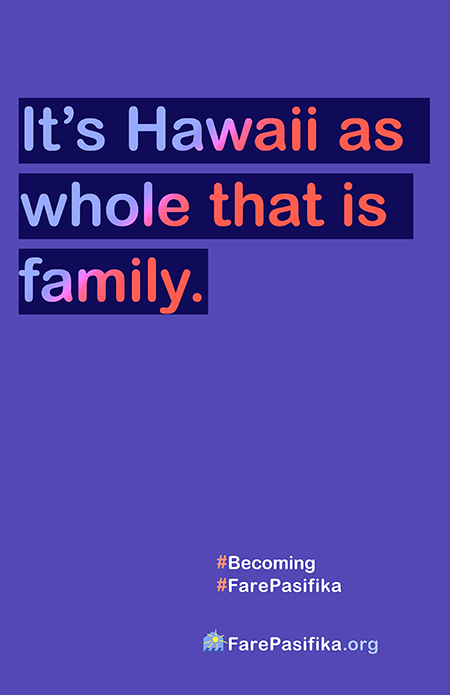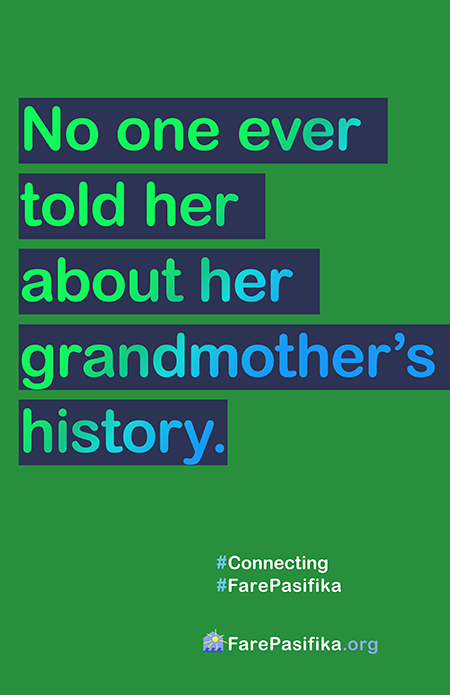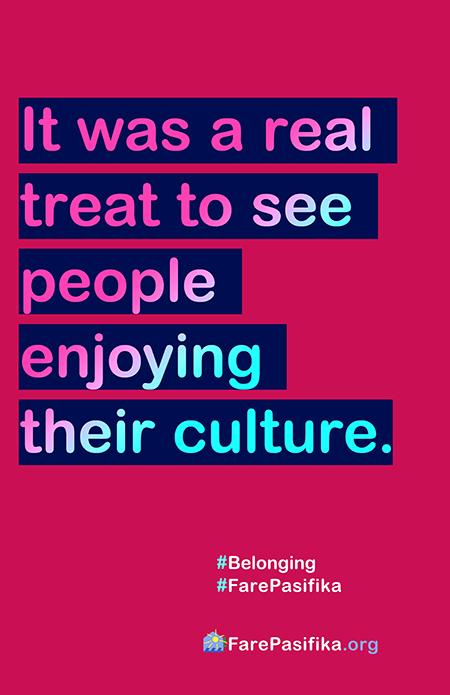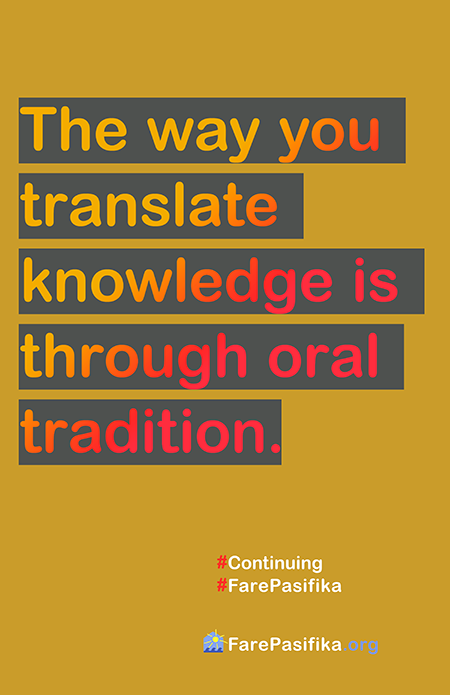- AIGA Change-maker Series
Summer 2017: I volunteered for an annual program that unites teams of designers with local non-profits on a three-month mission. I was assigned the role of Researcher on a team of seven although I've always been a designer. Other roles were Research Lead, Design Lead, Designer, Project Manager, Writer, and Business Consultant.
Our client was Fare Pasifika (Maori for Pacific House), an organization that provides native language classes to locals of Pacific Islander descent, many of whom may suffer from cultural displacement. They said they needed to (roughly paraphrased) solidify their identity and spread awareness of their organization and cause, as well as recruitment of both teachers and students.
The kick-off weekend was a meet-and-greet and crash course in Design Thinking, a.k.a. User-Centered Design, in two eight-hour sessions. I've included here the research report I wrote and some design ideas I developed individually.
- Research Report
We conducted some interviews, but largely abandoned the UCD process after the initial research. Most of the interview participants were hand-picked by the client: either language instructors in the program or former students. The team asked me to "synthesize" the research and come up with a theme for the project. I just did what I thought made sense:
- Compared and contrasted the interviews to search for themes
- Broke out and grouped meaningful statements
- Did word-frequency analysis, ranked the findings
- Interpreted the data
The report I produced was well received by the rest of the team. The report's main finding was that learning a heritage language is just one part of a bigger journey: Finding, Becoming, Connecting, Belonging, Preserving. Yet the journey doesn't really end there, because it's a journey shared by an entire people. The journey's effects take place along many dimensions: old to young, past to future, traditional to modern, ancestors to descendants, villages to cities, and many more. Now, as I write about the ongoing changes of a people, their language, and their culture, I realize I should change the name of the last stage from Preserving to Continuing.
- Pacific House
The client said their name, Fare Pasifika, is Maori for "Pacific House". I did a quick logo sketch on my phone. I wish we could have tested it, but the project didn't develop that way.
Logo Sketch
- Journey Map
The five themes and their sequence can easily be seen as phases of the heritage language learner's journey. It can be much more than classroom lessons and presents many opportunities for other types of engagement. Creating a Journey Map of the phases with current and potential touchpoints helps in planning future activities.
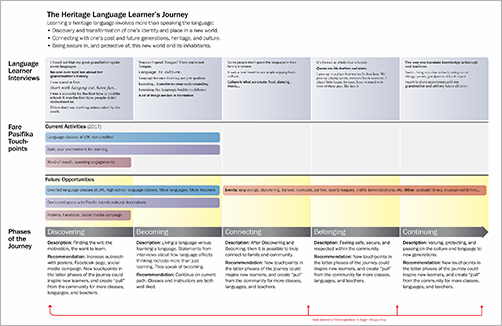
- Poster Series
- Podcast
- Each story in native language, English, and pictograms
- One set of pictograms for all languages
- Like a Pacific Islander spoken-language Rosetta Stone
- Traditional stories told by elders in native language, retold by youths in English: New generations learn their cultural mythology
- New stories told by younger generations in English, retold by elders in native language: New generation's experiences become part of the cultural mythology.
- Suggests pairs, or teams, of elders and youths. Maybe a competition? Event? Performance?
- Outcome
Sequence of themes from research interviews suggested a Journey Map
I used the statements I found in research interviews to tell the story of the The Heritage Language Learner's Journey in a typographic poster series. The posters easily could be placed around college campuses and Pacific Islander communities to arouse interest in a social media campaign, and increase awareness of FarePasifika and its mission. If the budget allows, simple variations of the same designs could also be put on t-shirts, other collateral items, and inside metro buses and light rail.
Transition is the common theme among the five stages of the journey, and the journey as a whole. A typographic approach is especially appropriate since language classes are the main focus of the client's mission. It's also simple and cost efficient. I reversed the text out of horizontal rectangles to emphasize the spoken element of the statements and add visual interest. The diagonal color gradation, with low contrast at upper left and high contrast at lower right, visually tells the story of enlightenment, awakening, and illumination.
I recently revisited and fleshed out this idea as a design systems example.
I had the idea of doing a podcast, which would be recorded audio available online, possibly a library. The team rejected this idea; perhaps because I presented it as a podcast, which typically infers a series of regularly scheduled new episodes. The name isn't really important. The idea was as follows.
An online library of origin-story recordings performed by elders and youths in each of the main PI language groups:
We wanted to create something with a lasting impact that could keep growing after we've moved on. Podcasts would work well: they're powerful, long lasting, inexpensive, and easy to make. Audio is the perfect medium for this design challenge: Oral storytelling is the traditional means of intergenerational transfer of language and culture, and reinforces identity. A library of podcasts could become a modern version of this tradition. Origin stories are the natural place to start the library: "Creation myths are the most common form of myth, usually developing first in oral traditions, and are found throughout human culture." [1]
The podcast library could eventually grow to include podcasts of stories based on the younger generation's experiences. A young person would tell their story in English, and then an elder would translate the story and retell it in the native language. In this way, through language, new experiences could be assimilated into tradition, and also help to provide a path forward for the culture's continuation in the modern world.
The research report is the only work I did that the team used. We collaborated on the research questions, recruitment, and interviews, but I alone did the analysis, synthesis, and report. I did the logo sketch during the project. I've included it here in its original version. I did the journey map on my own after the project had concluded. I had the idea for using statements from the interviews for posters and did the basic layout of the poster series during the project, but I recently added the color scheme and refined the layout. As I mentioned already, the podcast proposal wasn't well received, but it may have been misunderstood.
For some volunteers, besides the altruistic reward one receives from helping non-profit organizations, this sort of project may be best for providing work to be done outside of the team. I believe the project fell short of my hopes for a more successful collaborative experience because individual goals took priority over team goals. However, I did enjoy inventing a process for the research synthesis and felt a genuine reward from its reception by the team. I'm also proud of the individual design work I did based on the research report I wrote.
